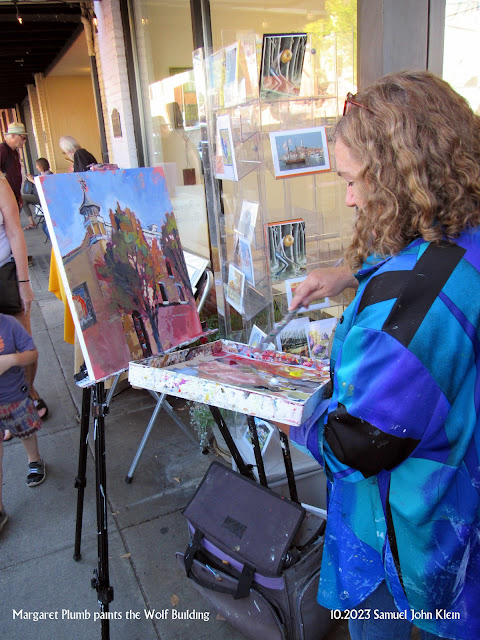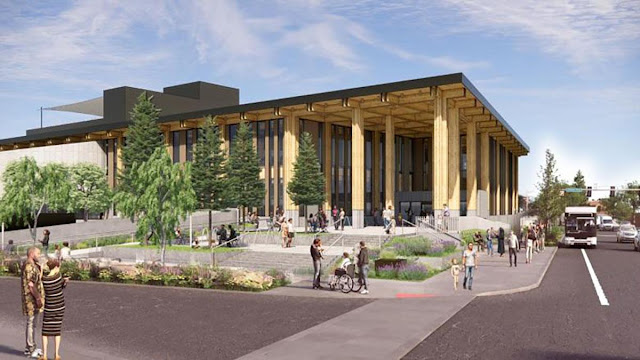4122
This is why I've Been Framed is a place one cannot do without. Not only it it just a great place with revolutionary artistic energy, but you meet extraterrestrials.
The extraterrestrial was in her full camouflage as a terribly charming 7-year old young woman possessed of a firey, fierce creativity. I will explain.
We wanted to stop by this. our favorite art place and the best one in the world, because Spouse was looking for pink fluff for cat toys. Our youngest feline, Tabitha, loves fluff toys, but she's very particular. They must be a specific shade of pink. And she's annihilated the ones we had for her and finding that pink, which seemed quite common, is proving unexpectedly, uncommonly difficult to do.
Prairie thought she might be of help, so off we went.
 Once we were there, I wandered about looking at art supplies while Spouse's attentions were more directed. Chatted with Prairie, which is always a pleasure. She showed me a bottle of linseed oil which is part of her extensive collection of vintage art supplies. I should have gotten a picture of this ... it had to be from the 1940s or so, it had the label of a downtown Portland pharmacy that had a phone number that a named exchange (CEdar, I think it was). And the vintage bottle was gorgeous and the contents still looked okay, though I think one has to go beyond mere looks when it comes to eighty-year-old linseed oil.
Once we were there, I wandered about looking at art supplies while Spouse's attentions were more directed. Chatted with Prairie, which is always a pleasure. She showed me a bottle of linseed oil which is part of her extensive collection of vintage art supplies. I should have gotten a picture of this ... it had to be from the 1940s or so, it had the label of a downtown Portland pharmacy that had a phone number that a named exchange (CEdar, I think it was). And the vintage bottle was gorgeous and the contents still looked okay, though I think one has to go beyond mere looks when it comes to eighty-year-old linseed oil.
It was at that point I crossed paths with the young lady from M'Reptune. She was engaged in animated extemporaneous discourse with Prairie, who had moved down to that end of the room by then. This small brown-haired force of nature was there with an older woman we'll presume for the moment was posing as this incredible being's mother; their down jackets - properly pillowy in PNW construction - had identcal colors. And she had so much to tell us about her treks and travels.
At first it was not revealed that she was extraterrestrial; her first representation was that she was technically a cat. She then demonstrated moves that suspiciously echoed the chaotic interaction our cat Ralph had with the belt on the fuzzy pink robe we kept on the bed for the itty bitty kitty committed to make biscuits on, so her claim actually has come credence.
She then clued us in on the M'Reptunian connection after that, while letting us know enroute that she was technically also a squirrel.
It was impossible not to be entertained by her banter, and I'm not kidding, it was non-stop, on fire but unconsumed. Tiny TED talks about the amazing culture and technology of M'Reptune reeled out of this young woman's imagination at a rate of knots, tales of her hyperspatial travel (it takes her two milliseconds to go from here to M'Reptune, for what that's worth) and I just bathed in this tiny delightful sun of instant creativity. So much unafraid, unabashed exposition, such joy in telling us of her worldbuilding, I couldn't help but smile and just listen.
There is a quote variously attributed to Beaudelair and Rimbaud, that goes "Genius is the recovery of childhood at will". I've always had the rational grasp of that, but here, displayed in front of me, unfiltered and unabashed, was that childhood that those of us who strive for creativity seek to capture. Most all of us had periods in our childhoods where we had these daft kid-ideas that we played with, created stories with, made drawings and paintings. I've for years, in the way of Proust, tried to get it back. Now that I've seen it up close with someone who couldn't help but share it, maybe it'll be a little easier to find.
As for our alien interlocutor, she left the shop about the time me and Spouse did, but as she left she gave me a gift, asked me if I wanted of her technology, and into my hand she dropped a M'Reptunian ray gun.
It's mine now, this M'Rretunian ray gun, given freely, and nobody can take it away.
It's unlikely, but I hope I remain the world long enough to see what direction she takes that fabulous ball of happiness in. They might stop by IBF again, who knows?
That drove back some shadows on my brow, and I tell you no lies there.
For me, what did I get? Feast your eyes.
It's a vintage Grumbacher Gainsborough oil paint box. When originally sold it carried 24 tubes of Grumbacher Gainsborough oil paint in the two middle compartments, painting accessories in the long compartments left and right, and brushes across the bottom, at least I think that's the way it works. And it'll carry some art accoutrements for me, I just have to figure out which ones and why.
 Also! I've Been Framed Art Supply Center is holding a showing in June and an Artist Trading Card swap at the end of it. Anyone not familiar what ATCs are and why they're nifty, well, Google that stuff, or even better, stop in IBF's Art Supply Center at Foster and Powell and ask 'em about it. They'll fork over a single blank ATC media - either smooth or textured, a little 2.5" x 3.5" card and you go wild and drop it by and at the end of the showing we all swap
Also! I've Been Framed Art Supply Center is holding a showing in June and an Artist Trading Card swap at the end of it. Anyone not familiar what ATCs are and why they're nifty, well, Google that stuff, or even better, stop in IBF's Art Supply Center at Foster and Powell and ask 'em about it. They'll fork over a single blank ATC media - either smooth or textured, a little 2.5" x 3.5" card and you go wild and drop it by and at the end of the showing we all swap
ATCs are a fun, low-stakes way of dipping a toe into the grassroots art world. All sorts of media happen, acrylic, mixed media, oils, watercolors, and the lot, but I personally find it's a great pairing for drawing and cartooning. However, it's all great fun and the trading cards one gets out it are decidedly delightful and the very definition of unique.
IBF's Art Supply Center is located where it always has been, 4950 SE Foster Road, here in Portland. It's a one-of-a-kind place, Prairie is our hero, and anyone reading this owes it to themselves to stop by.













































